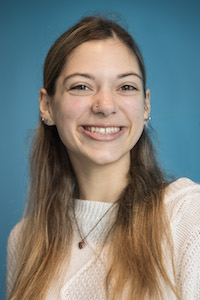
Teaching Practices Among Instructors of a Hispanic-Serving Institution
Téa Pusey, Jourjina Alkhouri, Cristine Donham, Adriana Signorini, Petra Kranzfelder
Educators have long debated what instructional practices are most engaging when teaching STEM courses. Previous research suggests that a “student-centered” pedagogy is the most effective approach, however, little research has been done at Hispanic Serving Institutions (HSIs). Research has also shown that people who have been excluded based on their ethnicity/race (PEERs) leave STEM at much higher rates than non-PEER students. This study aims to discover the pedagogical patterns at one mid-size, research-intensive HSI, and whether they take a student-centered approach to STEM instruction. We used the Classroom Observation Protocol for Undergraduate Studies (COPUS) data tool to examine the teaching and learning practices in STEM courses. We analyzed 36 instructors' pedagogical behaviors among 102 class sessions. To do this, we collapsed 23 COPUS codes into four codes: 1) Presenting, 2) Guiding, 3) Administering, and 4) Other. Next, we examined the code frequency among the two-minute intervals, as well as the code frequency among all the codes in the class session. We predict that instructors are mostly lecturing, which is not considered a “student-centered” approach. Based on our results, we demand a “call of action” for HSI instructors to adapt active learning in their classrooms. Additionally, the results of this research can be used to create a training program for faculty on how to create a “student-centered” classroom.
Mobile device: Open PDF to view the document in a new browser window.
Email Scholar - Provide Feedback - Return to Showcase Gallery

